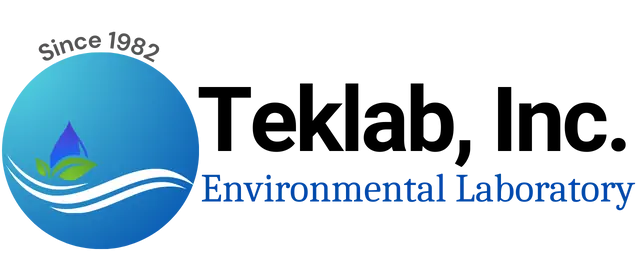Specialty Analysis: RSK-175 Procedure Methodology for Dissolved Gases in Groundwater
Teklab is an environmental testing laboratory that provides specialized analysis, including the standard operating procedure RSK-175, for dissolved gases in groundwater and other aqueous samples. This method measures natural attenuation parameters such as dissolved methane, ethane, ethylene, and butane. These gases are important indicators of the effectiveness of remediation activities, as they are often generated during the degradation of complex organic compounds. The RSK-175 standard operating procedure was developed in order to determine the amount of dissolved gas in water.
There has been increased interest in this procedure in the realm of hydraulic fracturing and horizontal drilling. However, since the Environmental Protection Agency (EPA) does not have a method for this analysis and the RSK-175 procedure is a standard operating procedure and not a formal method, there have been many interpretations and modifications of RSK-175 in order to determine the amount of gas dissolved in the water.
JSB International has collaborated with EST Analytical to draft a RSK-175 Calibration and Analysis Comparison for dissolved gasses in water, which provides insight into the overview of RSK-175 and the procedure.
Importance of Dissolved Gas Measurement
The measurement of dissolved gases like methane, ethane, and ethylene in groundwater is essential for determining whether intrinsic bioremediation is occurring in fuel- or solvent-contaminated aquifers. These gases provide insight into natural degradation processes that help remediate contamination.
Analytical Procedure Summary
A simple yet effective procedure is used to collect and analyze groundwater samples for dissolved gases:
- Sample Collection: Aqueous samples are collected in 40 mL VOA vials, ensuring minimal gas exchange.
- Headspace Creation: A 4.0 mL headspace is generated in the vial.
- Equilibration: The vial is shaken to allow equilibrium between the water and headspace phases.
- Headspace Analysis: An aliquot of the headspace is analyzed using gas chromatography (GC) with a flame ionization detector (FID).
- Concentration Calculation: The concentration of the dissolved gas in the original water sample is calculated using:
- Henry’s Law constant (H) for the target analyte
- The concentration of the gas in the headspace
- Bottle volume
- Sample temperature
- Volume of headspace injected
This method provides accurate and reliable results for assessing the presence and concentration of dissolved gases.
Key Analytes and Their Characteristics
➡ Methane (CH₄)
- Uses: Primarily used as a fuel for heat and light, as well as in organic chemical production.
- Occurrence: Found in landfills, marshes, septic systems, and sewers.
- Safety Note: Can form explosive mixtures in air at levels as low as 5%.
➡ Ethane (C₂H₆)
- Uses: A precursor to ethylene in the petrochemical industry, mainly for producing plastics.
➡ Ethylene (C₂H₄)
- Uses: A key feedstock in producing polymers, industrial chemicals, and for controlled ripening of produce.
- Environmental Note: Significant production worldwide is associated with high CO₂ emissions.
Method Development and Standards
Our RSK-175 procedure is based on:
- The journal article, “Analysis of Dissolved Methane, Ethane, and Ethylene in Ground Water by Standard Gas Chromatographic Technique,” published in the Journal of Chromatographic Science, Volume 36 (May 1998).
- The RSKSOP-175 standard operating procedure developed for the USEPA’s Ground Water Ecosystems Restoration Division.
Please note: Local regulatory requirements may necessitate testing for unique organic compounds not included in standard EPA or SW-846 lists. In such cases, Teklab performs validation studies to determine if the target compounds can be extracted and analyzed using reference methods.
All efforts are made to ensure compliance with NELAP accreditation standards, please feel free to navigate to our Contact Us page and utilize the built-in form to send a request or email a specific project manager. Teklab strongly recommends utilizing a NELAP-accredited environmental testing laboratory, even for compounds that are not routinely analyzed or listed in EPA-approved methods. This ensures the highest standards of accuracy and reliability in environmental testing.



